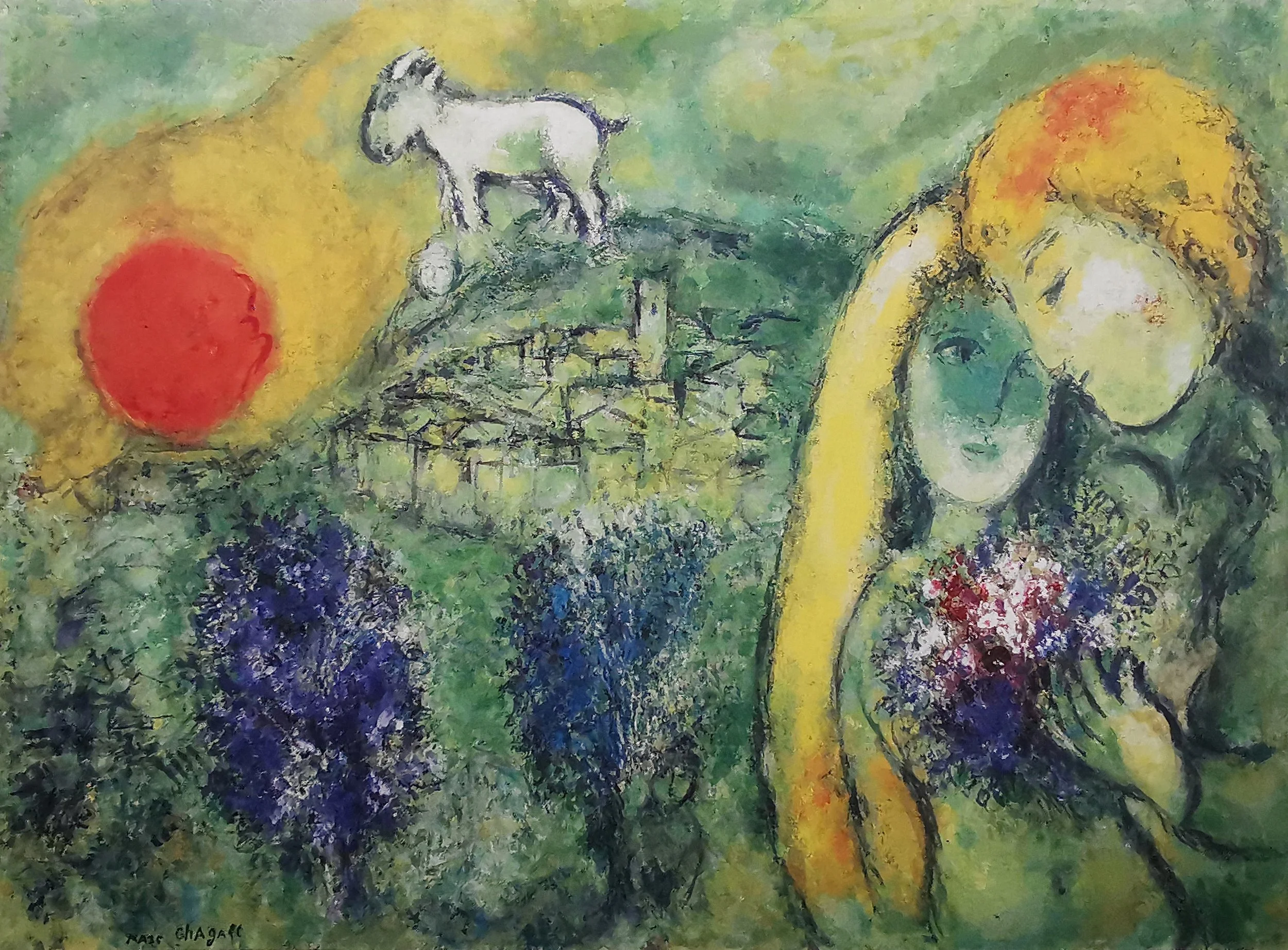Marc Chagall
Marc Chagall (1887–1985) was one of the most influential artists of the 20th century, whose dreamlike visions reshaped the possibilities of modern painting. Born in Vitebsk, Belarus, into a Hasidic Jewish family, Chagall carried the imagery of his childhood—village rooftops, fiddlers, lovers, and animals—into a visual language that transcended geography and spoke to universal human experience.
After studying in St. Petersburg and later moving to Paris in 1910, Chagall encountered the avant-garde currents of Cubism and Fauvism. Yet he remained distinct: his art fused modernist experimentation with folk traditions, religious symbolism, and personal memory. His canvases are filled with floating figures, luminous colors, and poetic distortions of reality, blending fantasy with autobiography.
Returning to Vitebsk after the Russian Revolution, he founded the Vitebsk Art School, which became a crucial site of early Soviet modernism. Later, escaping persecution and the devastations of war, Chagall lived in exile across Europe and the United States, expanding his practice into monumental stained glass, theatre design, and public commissions.
Today, Chagall’s work is housed in major museums worldwide, from the Centre Pompidou in Paris to the Museum of Modern Art in New York. His artistic legacy is both deeply personal and universally resonant—a vision in which memory, folklore, and spirituality converge to affirm life in the face of exile and loss.
Copyright © New Belarus Art 2025
Legal | Privacy & Cookies
